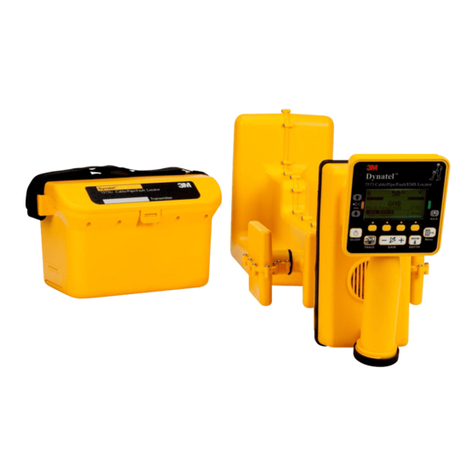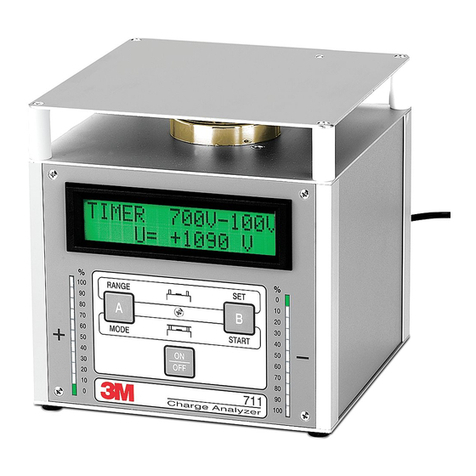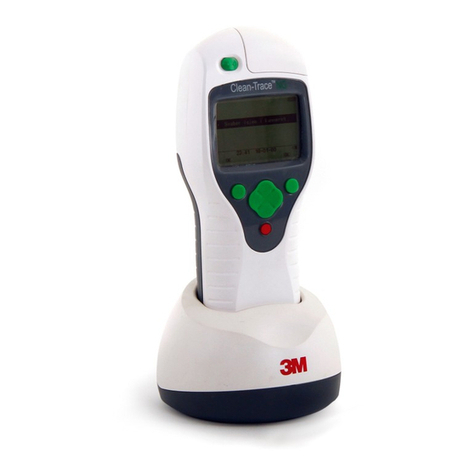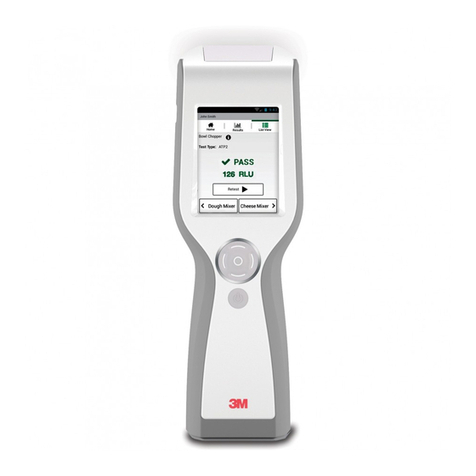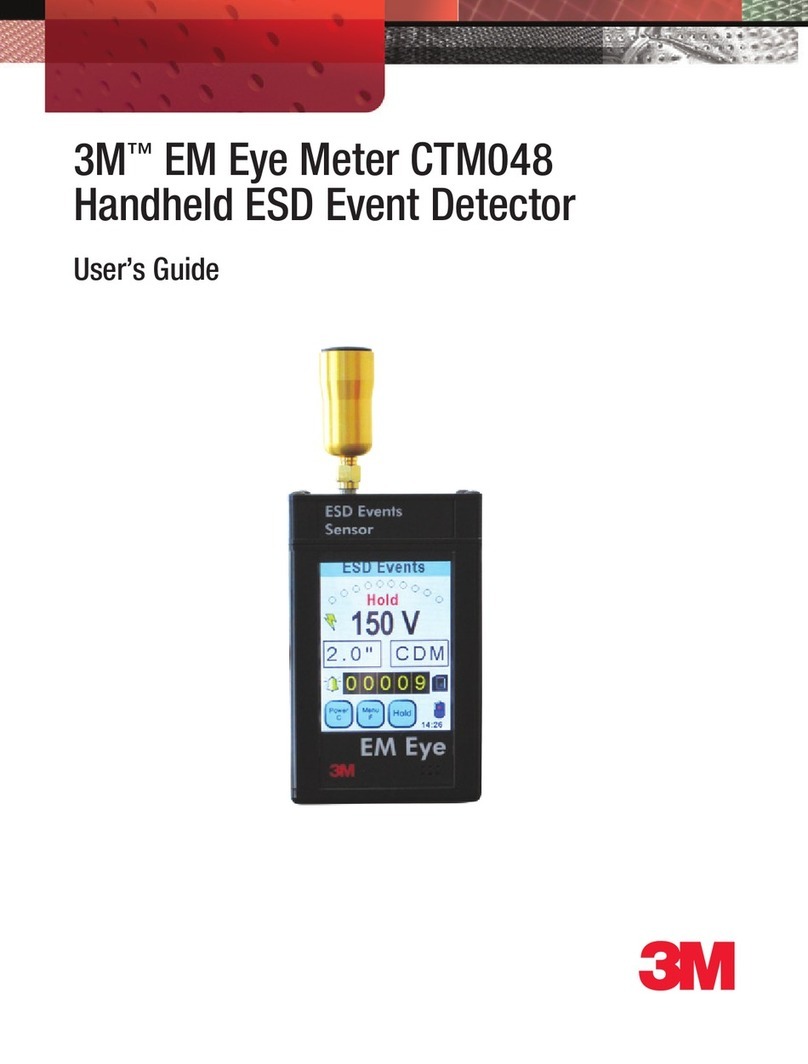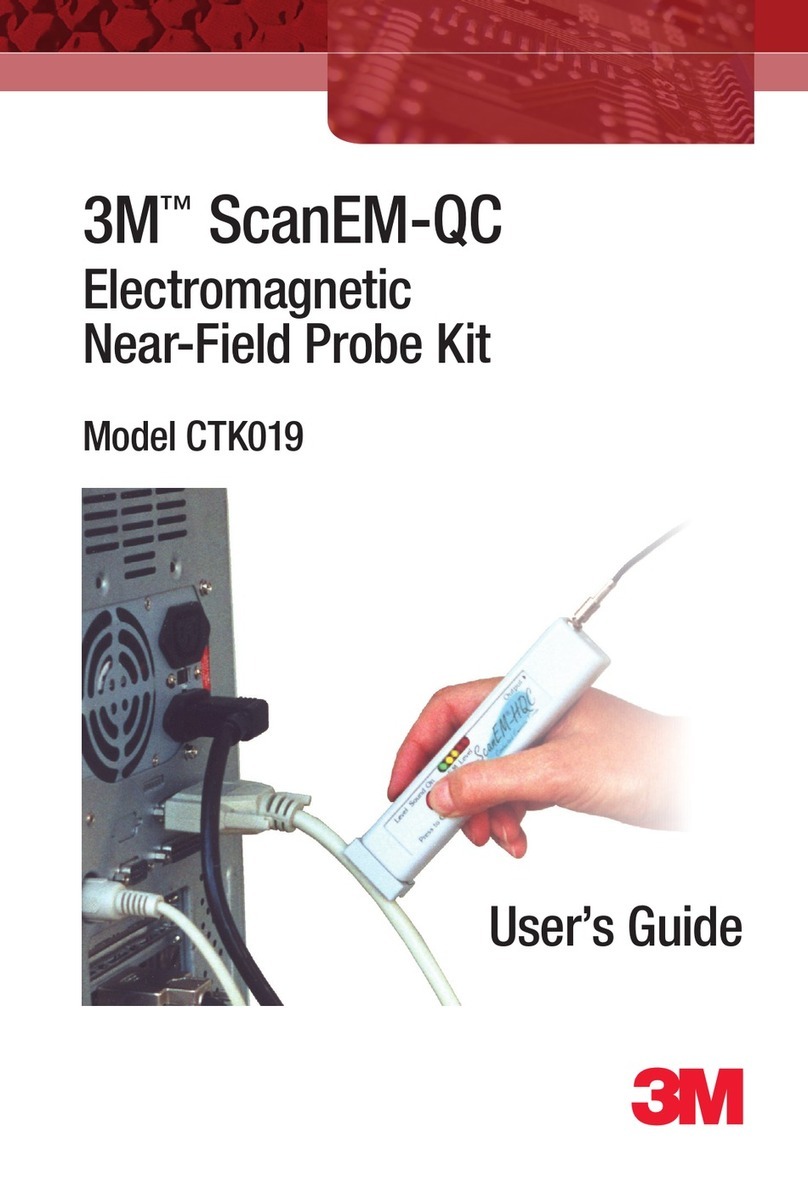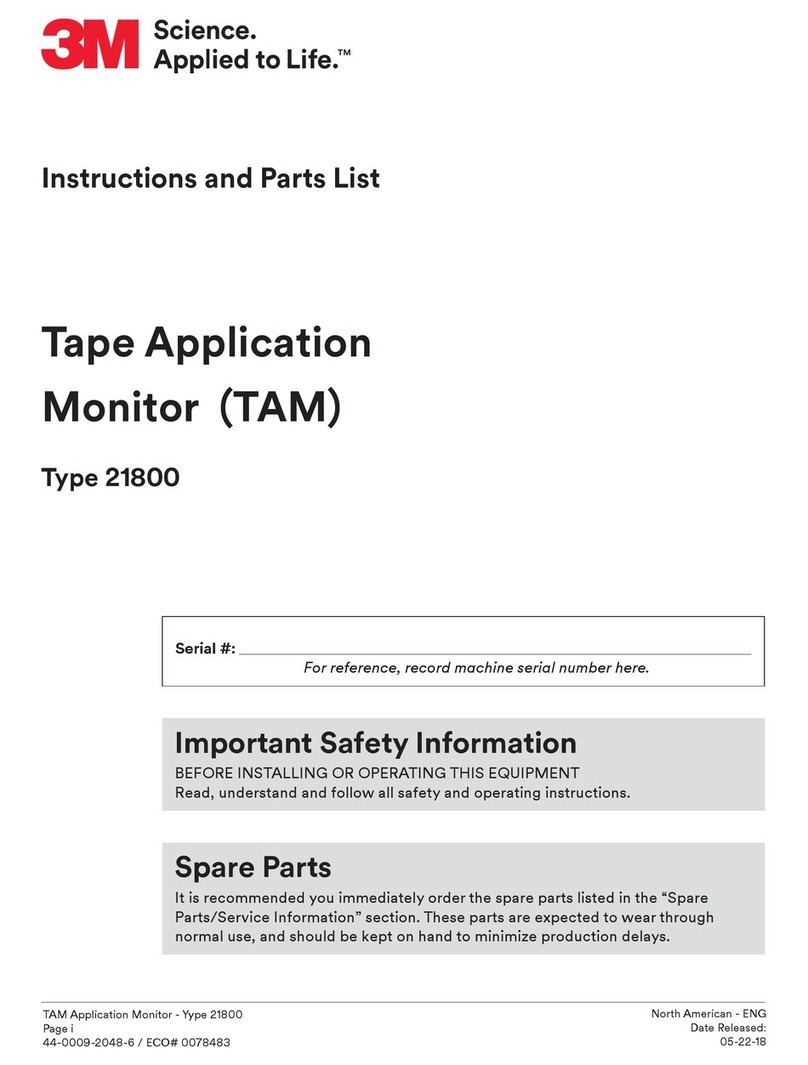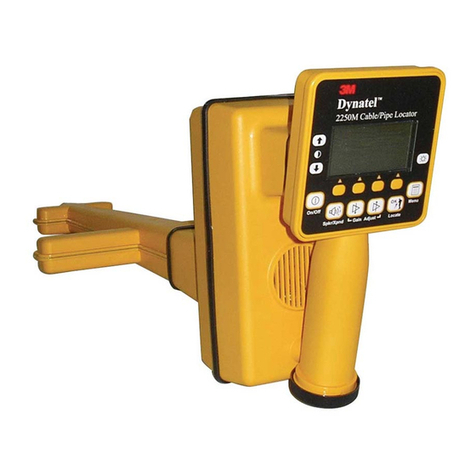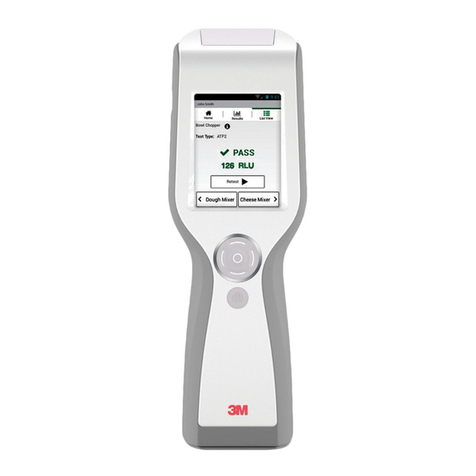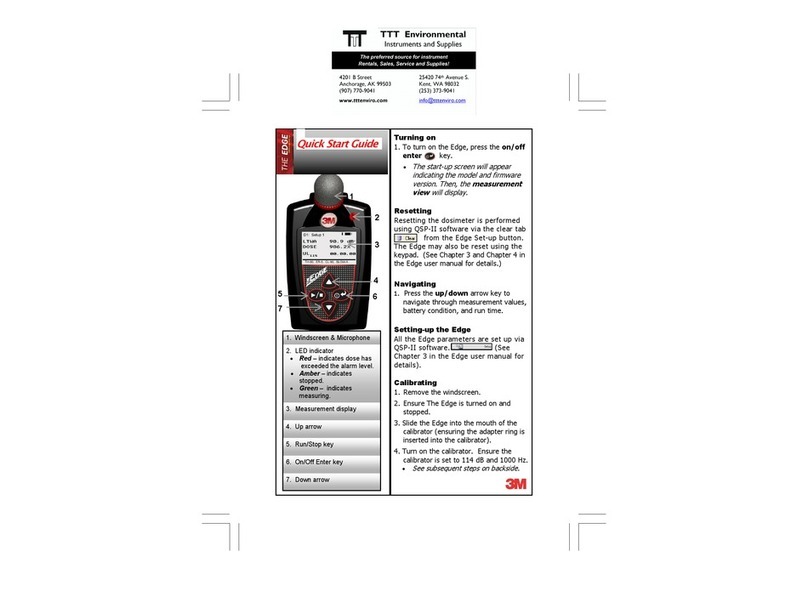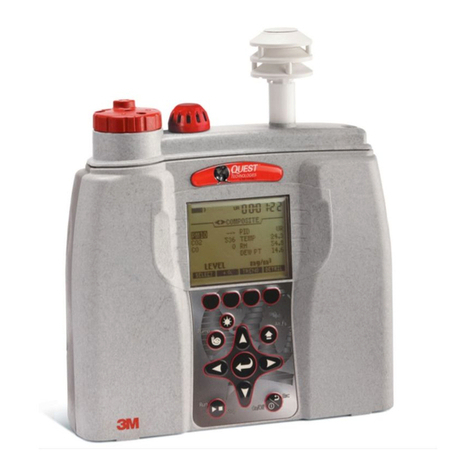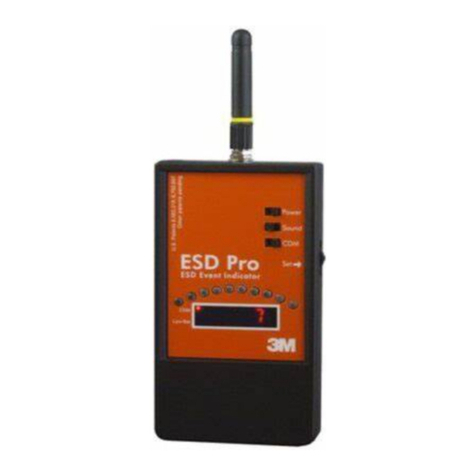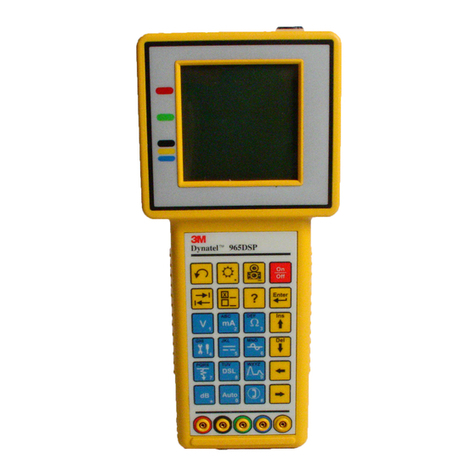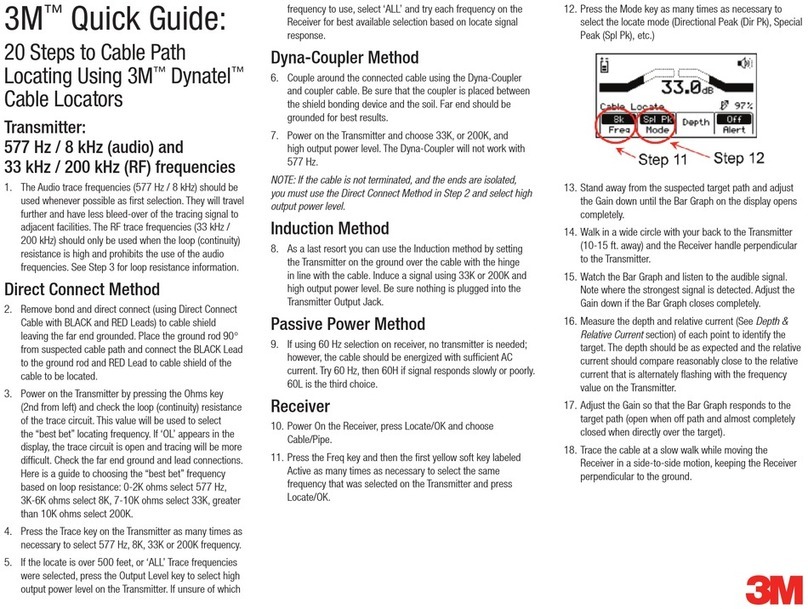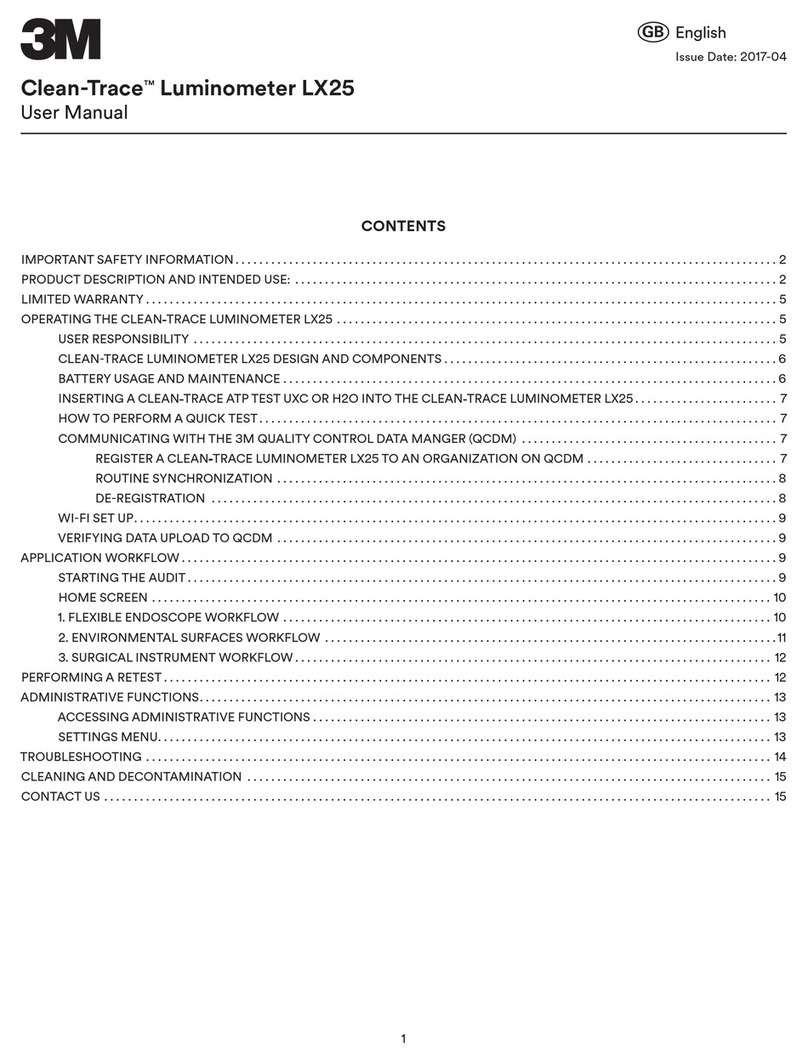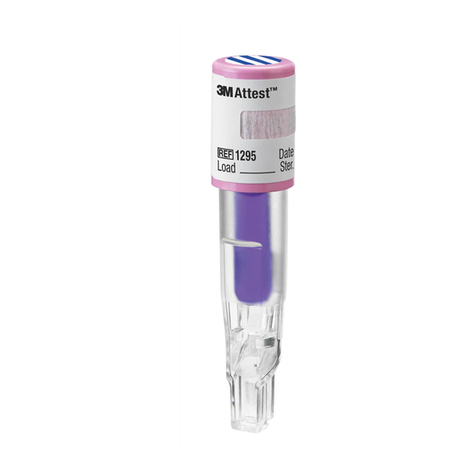
6Operating
Screen indicators
Screen indicatorsare a typeof notification identifying measurementparameters&/or screen icons.
Table 1-2: Screen indicators
Sound pressure level -The basic measure of noise loudness expressed in decibels. SPL uses
the ratio between a reference level of 20 microPascals (.00002 Pascals) and the level being
measured. It is displayed in decibels (dB).
Maximum sound level - The highest SPL measured during integrating period.
- The lowest SPL measured during integrating period.
EQ/
AVG
Equivalent pressure sound level/Average sound pressure level – The true equivalent sound
level (or average SPL) measured over the integrating period. The term LEQ is used when 3 dB
exchange rate is applied; The L
AVG
is used when 5 dB exchange rate is applied.
Battery
Battery indicator –There are two battery indicator states.
•When battery power icon appears, this indicates the instrument has low power and needs to
be charged.
•Battery power icon flashing indicates the battery is charging.
Run indicator - Signifies that you are measuring L
EQ
AVG
, LED Alert , MAX, and MIN screens
over the Run-Time .
Detection icon –Appears whenviewing the LED Alert screen. (Note: LEDs will flash if set
points are met or exceeded. See “LED Alert” for more info.
Run-Time
Run-Time – Indicates the time elapsed from the start of the run mode which is used to calculate
the LEQ/LAVG, LED Alert , MAX, and MIN values. Run-Time starts as minutes and seconds
and then changes to hours and minutes when 20 minutes is reached. It will display hours only
Overload – Indicates that the dB has exceeded the range of SD-200 (40 -130 dB).
Under Range – Indicates that the displayed measurement is below the linearity range (45 -130
dB).
Fast/Slow time response - The response time setting determines how quickly the unit responds
to fluctuating noise. Typically, noise is not constant. If you were to try to read the sound level
without a response time, the readings would fluctuate so much that determining the actual level
would be extremely difficult. While the terms slow and fast have very specific meanings (time
constraints), they work very much as you would expect. The fast response would result in a more
fluctuating sound level reading than would the slow response. (See Specifications, “Time
Response”)
A frequency weighting or C frequency weighting
-
These are frequency filters that approximate
the equal loudness response of human hearing at low, medium, and high SPL’s. A frequency
weighting is the most commonly used filter defined in the international standard IEC 61672:2003.
Common applications of A weighting include industrial noise applications and community noise
regulations (such as: manufacturing noise or machine shop monitoring.) The A frequency weighted
filter makes the sound level meter respond closer to the way the human ear responds to noise at
lower levels. It attenuates the low frequency noise below several hundred Hertz as well as the high
frequency above six thousand Hertz. C frequency weighting is intended to represent how the ear
responds to very high levels.
